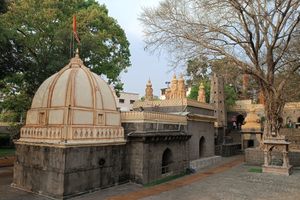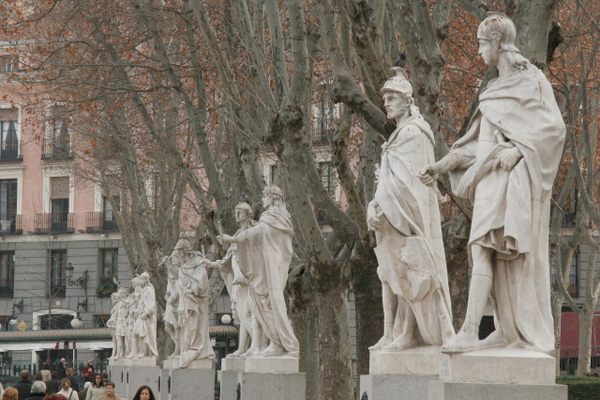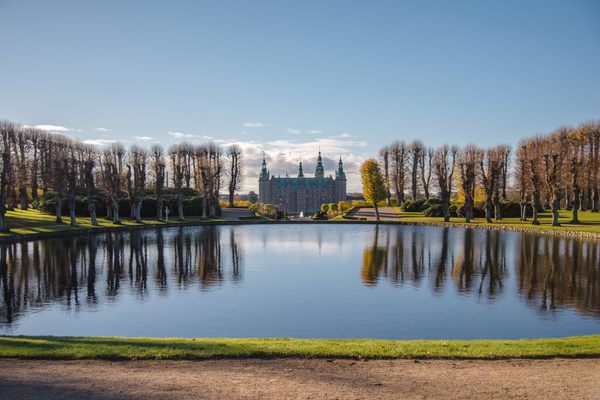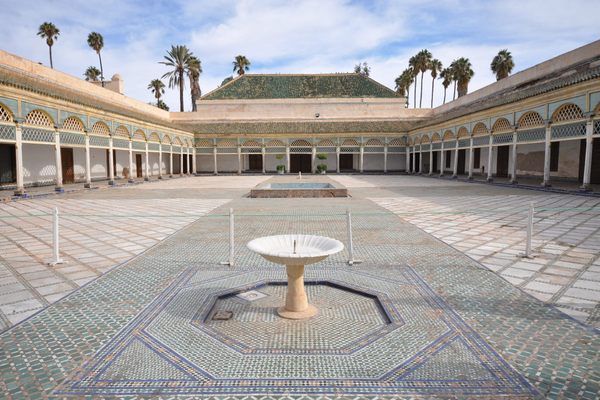About
In a country teeming with historic mansions and palaces, it’s easy for Datia Palace, an imposing five-story structure rising more than 130 feet, to languish in obscurity. Perched atop a low-lying hill in the town of Datia, Madhya Pradesh, this 17th-century palace is one of the finest examples of Indo-Islamic architecture in India.
The palace, uninhabited for centuries, is an epitaph in brick and stone for a bygone era when Datia was in the thick of royal intrigues and wars of succession at the Mughal court. The atmosphere inside the palace is pensive and wistful, and visitors find themselves caught in the folds of time.
When Jahangir succeeded his father Akbar to the Mughal throne, he conferred the title of Maharaja (Great King) on Bir Singh Deo, a Rajput chieftain from Bundelkhand, ruler of the Kingdom of Orchha, and builder of the majestic Datia Palace. The king died in the same year as his patron Emperor Jahangir, in 1627, leaving behind a structure that celebrates the confluence of his Rajput heritage and the imperial Mughal style of architecture.
A narrow alley, just about wide enough to fit a car, twists and turns through a warren of shops and houses and finally leads to its mountainous façade. Intricate designs and paintings of horses and riders, nobles of the court, Hindu gods, and floral motifs adorn the spandrels and recesses on the front-facing façade. The square-plan building, with four octagonal towers at each corner, towers over the surrounding area, affording panoramic views of the ramparts of the fort and the Karna Sagar Lake below.
Inside the palace, the multi-storied chambers open onto a central courtyard that is sectioned off into four square units by double-storied corridors. These corridors, decorated with ornate pillars, link the grand central pavilion to the courtyard units. As the afternoon draws to a close, the last of the sunlight plays with the skeins of darkness in the shadows, creating a chiaroscuro painting on the walls of the palace.
The ceilings of the palace, embellished with elegant designs in the style of Persian carpets, are a sight to behold. The building’s windows are modeled after the mashrabiya, a type of projecting oriel window enclosed with latticed screens carved from wood, with each square section exhibiting a different motif.
Related Tags
Know Before You Go
There is no entry fee. A guard is usually stationed at the entrance to the palace and will often offer to serve as a guide in Hindi.
Delhi and Rajasthan: Colors of India
Discover Colorful Rajasthan: From Delhi to Jaipur and Beyond.
Book NowCommunity Contributors
Added By
Published
May 14, 2019
Sources
- Catherine B. Asher, Architecture of Mughal India, Cambridge University Press, 1992
- R. V. Solomon; J. W. Bond, Indian States: A Biographical, Historical, and Administrative Survey. Asian Educational Services, 2006
- https://www.thehindu.com/features/homes-and-gardens/lutyens-loved-it/article3945529.ece































